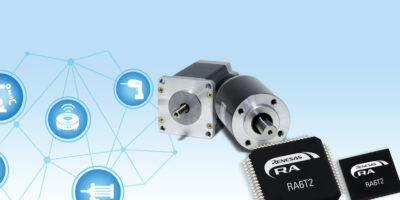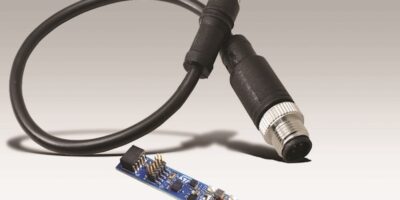Motor control in inverter appliances, building automation and industrial drives can benefit from the RA6T2 family of microcontrollers (MCUs), says Renesas Electronics. They are claimed to achieve higher performance and cost-efficient motor control and are supported with motor control tools and design kits.
The RA6T2 MCUs feature peripheral functions and hardware accelerator designed specifically for motor control. They are intended for used in motor control designs in home appliances, smart home, industrial and building automation as well as inverter control.
The 32-bit MCUs are based on the 240MHz Arm Cortex-M33 core, with 512kbyte flash ROM, 64kbyte SRAM and 16kbyte data flash.
Two independent ADC units offer high-speed conversion with a maximum speed of 0.16 microseconds and include a simultaneous sample and hold function for three channels to detect the three-phase current of a motor. Integral amplifiers can set gain according to the input voltage range and analogue components that were previously external are incorporated, including comparators which detect abnormal voltage input and over current. An adjustable PWM timer makes it easy to port existing algorithms. It also provides a PWM output cut-off safety function in the event of an abnormality. This feature set allows a single RA6T2 MCU to simultaneously control up to two brushless DC (BLDC) motors, says Renesas.
The embedded hardware accelerator includes both a trigonometric function unit (TFU) and an infinite impulse response (IIR) filter to offer increased performance and reduced CPU load enabling parallel tasks such as communication.
The TFU performs high speed calculations without the need for lookup tables, for effective use of ROM. The IIR filter offers co-efficient setting methods that make it easier to port from existing algorithms, says the company.
The RA6T2 MCUs are available in five package options, which are a 100-pin LQFP, 64-pin LQFP, 48-pin LQFP, 64-pin QFN and 48-pin QFN.
They are supported by Renesas’ Flexible Software Package (FSP) for porting designs from other Renesas MCUs.
Renesas is also offering a range of design tools, including the RTK0EMA270S00020BJ motor control kit, a CPU board, an inverter board and a motor work bench graphical user interface (GUI) tool with real-time debugging and digital oscilloscope functionality.







